CryptoWall 4.0 is a file-encrypting ransomware, which will encrypt the personal documents found on victim’s computer using RSA-2048 key (AES CBC 256-bit encryption algorithm). CryptoWall 4.0 then displays a message which offers to decrypt the data if a payment of $700 (1.79 Bitcoins) ransom is made within 96 hours. If the user does not pay within this time frame, the ransom doubles to $1400 or €1400 (3.58 BTC).
Compared to the previous version, CryptoWall 4.0 comes with some significant changes such as filenames now being encrypted, more robust Shadow Volume Copy deletion, new ransom note filenames, new payment gateways, and a redesign of the HTML ransom note.
1. How did the CryptoWall 4.0 virus got on my computer?
2. What is CryptoWall 4.0 Ransomware?
3. Is my computer infected with CryptoWall 4.0 virus?
4. Is it possible to decrypt files encrypted by CryptoWall 4.0?
5. How to remove the CryptoWall 4.0 ransomware (Virus Removal Guide)
6. How to prevent your computer from becoming infected by CryptoWall 4.0
1. How did the CryptoWall 4.0 virus got on my computer?
The CryptoWall 4.0 virus is distributed through several means. Malicious websites, or legitimate websites that have been hacked, can infect your machine through exploit kits that use vulnerabilities on your computer to install this Trojan without your permission of knowledge.
Another method used to propagate this type of malware is spam email containing infected attachments or links to malicious websites. Cyber-criminals spam out an email, with forged header information, tricking you into believing that it is from a shipping company like DHL or FedEx. The email tells you that they tried to deliver a package to you, but failed for some reason. Sometimes the emails claim to be notifications of a shipment you have made. Either way, you can’t resist being curious as to what the email is referring to – and open the attached file (or click on a link embedded inside the email). And with that, your computer is infected with the CryptoWall 4.0 virus.
The threat may also be downloaded manually by tricking the user into thinking they are installing a useful piece of software, for instance a bogus update for Adobe Flash Player or another piece of software.
2. What is CryptoWall 4.0 Ransomware?
The CryptoWall 4.0 ransomware targets all versions of Windows including Windows XP, Windows Vista, Windows 7, Windows 8 and Windows 10. This infection is notable due to how it encrypts the user’s files – namely, it uses AES-265 and RSA encryption method – in order to ensure that the affected user has no choice but to purchase the private key.
When the CryptoWall 4.0 ransomware is first installed on your computer it will create a random named executable in the %AppData% or %LocalAppData% folder. This executable will be launched and begin to scan all the drive letters on your computer for data files to encrypt.
CryptoWall 4.0 ransomware searches for files with certain file extensions to encrypt. The files it encrypts include important productivity documents and files such as .doc, .docx, .xls, .pdf, among others. When these files are detected, this infection will change the extensions and names to random characters to prevent victims recognizing them (example of an encrypted file name: 3aweno9f.7gt8 , 0hewendfq.p5r or d2121rg.m4)
The filenames are probably encrypted to make it more difficult to know what files need to be recovered and to make it more frustrating for the victim.
Files targeted are those commonly found on most PCs today; a list of file extensions for targeted files include:
.sql, .mp4, .7z, .rar, .m4a, .wma, .avi, .wmv, .csv, .d3dbsp, .zip, .sie, .sum, .ibank, .t13, .t12, .qdf, .gdb, .tax, .pkpass, .bc6, .bc7, .bkp, .qic, .bkf, .sidn, .sidd, .mddata, .itl, .itdb, .icxs, .hvpl, .hplg, .hkdb, .mdbackup, .syncdb, .gho, .cas, .svg, .map, .wmo, .itm, .sb, .fos, .mov, .vdf, .ztmp, .sis, .sid, .ncf, .menu, .layout, .dmp, .blob, .esm, .vcf, .vtf, .dazip, .fpk, .mlx, .kf, .iwd, .vpk, .tor, .psk, .rim, .w3x, .fsh, .ntl, .arch00, .lvl, .snx, .cfr, .ff, .vpp_pc, .lrf, .m2, .mcmeta, .vfs0, .mpqge, .kdb, .db0, .dba, .rofl, .hkx, .bar, .upk, .das, .iwi, .litemod, .asset, .forge, .ltx, .bsa, .apk, .re4, .sav, .lbf, .slm, .bik, .epk, .rgss3a, .pak, .big, wallet, .wotreplay, .xxx, .desc, .py, .m3u, .flv, .js, .css, .rb, .png, .jpeg, .txt, .p7c, .p7b, .p12, .pfx, .pem, .crt, .cer, .der, .x3f, .srw, .pef, .ptx, .r3d, .rw2, .rwl, .raw, .raf, .orf, .nrw, .mrwref, .mef, .erf, .kdc, .dcr, .cr2, .crw, .bay, .sr2, .srf, .arw, .3fr, .dng, .jpe, .jpg, .cdr, .indd, .ai, .eps, .pdf, .pdd, .psd, .dbf, .mdf, .wb2, .rtf, .wpd, .dxg, .xf, .dwg, .pst, .accdb, .mdb, .pptm, .pptx, .ppt, .xlk, .xlsb, .xlsm, .xlsx, .xls, .wps, .docm, .docx, .doc, .odb, .odc, .odm, .odp, .ods, .odt
While encrypting your files, the CryptoWall 4.0 ransomware will also create the HELP_YOUR_FILES.TXT and HELP_YOUR_FILES.HTML text files ransom note in each folder that a file has been encrypted and on the Windows desktop. The ransomware will also change your Windows desktop wallpaper to HELP_YOUR_FILES.PNG.
These files are located in every folder that a file was encrypted as well as in the users Startup folder so that they are automatically displayed when a user logs in. These files will contain the informations on how to access the payment site and get your files back.
When you go to the URLs listed in the ransom note you will be taken to a TOR site where you can learn how much your ransom is and how to make the payment.
CryptoWall 4.0 introduces new gateways to the TOR Decrypt Service site. The current payment sites are 3wzn5p2yiumh7akj.partnersinvestpayto.com, 3wzn5p2yiumh7akj.marketcryptopartners.com, 3wzn5p2yiumh7akj.forkinvestpay.com, 3wzn5p2yiumh7akj.effectwaytopay.com, and 3wzn5p2yiumh7akj.onion.
3. Is my computer infected with CryptoWall 4.0 virus?
If your computer is infected with the CryptoWall 4.0 ransomware will display a black HELP_YOUR_FILES.PNG wallpaper that covers the entire desktop. A HELP_YOUR_FILES.txt text file will be placed on your desktop. Both files contain instruction on how or recover the encrypted files.
The messages displayed by this ransomware infection can be localized depending on the user’s location, with text written in the appropriate language.
This the message that the CryptoWall 4.0 ransomware may display:
Cannot you find the files you need? Is the content of the files that you have watched not readable? It is normal because the files’ names, as well as the data in your files have been encrypted. Congratulations!!! You have become a part of large community of CryptoWall . If you are reading this text that means that the software CryptoWall has removed from your computer.
What is encryption? Encryption is a reversible transformation of information in order to connect it from unauthorised persons but providing at the same time access to it for authorised users. To become an authorised user and make the process truly reversible i.e to be able to decrypt your files you need to have a special private key. In addition to the private key you need the decryption software with which you can decrypt your files and return everything in its place. I almost understood but what do I have to do? The first thing you should do is to read the instructions to the end. Your files have been encrypted with the CryptoWall software; the instructions that you find in folders with encrypted files are not viruses, they are you helpers. After reading this text 100% of people turn to a search engine with the word CryptoWall where you’ll find a lot of thoughts, advice and instructions. Think logically – we are the ones who closed the lock on your files and we are the only ones who have this mysterious key to open them. Any of your attempts to restore you files with the third-party tools can be fatal for encrypted files. The fact that changing data within the encrypted files (as 100% of software to restore files do this, except the special decryption software) you break damage to the files and it will be impossible to decrypt the files. This is the same as to collect a mosaic when some mosaics items were lost, broken or not put in its place – the picture will not emerge, the software to restore the files will not be able to lay down the picture, and ruin it completely and irreversibly. Use the software to restore files can ruin your files forever, only through your fault. Remember that any intervention of the extraneous software to restore files encrypted with the CryptoWall software may be the point on no return. In case if these simple rules are violated we will not be able to help you, and we will not try because you have been warned. For your attention the software to decrypt the files (as well as the private key that come fitted with it) is a paid product. After purchasing the software package you can: 1.Decrypt all your files. 2. Work with your documents. 3. View your photos and other media content. 4. Continue your habitual and comfortable work at the computer. If you are aware whole importance and criticality of the situation, then we suggest you go directly to your personal page where you will be given final instructions, as well as guarantees to restore your files.
What do you have to do with these addresses? If you browse the instructions in TXT format (if you have instructions in HTML (the file that has an icon of your Internet browser) then for the sake of simplicity it is better to run it). Additional information: Instructions to restore your files are only in the folders where you have encrypted files. For your convenience the instructions are made in three files formats – html, txt and png. Unfortunately, antivirus companies cannot protect and moreover restore your files but they make things worse removing the instructions to restore encrypted files. The instructions are not malware, they have informative nature only, so any claims on the absence of any instructions files you can send to your antivirus company. CryptoWall Project is not malicious and is not intended to harm a person and his/her information data. This project is conducted for the sole purpose of instruction in the field of information security, as well as certification of antivirus products for their suitability for data protection. Together we make the Internet a better and safer place. If you oversee this text in the Internet and understand that something is wrong with your files and you have no instructions to restore files, contact your antivirus support. Remember that the worst has already happened and now the further life of your files depends directly in your determination and speed of your actions.
5. How to remove the CryptoWall 4.0 ransomware (Virus Removal Guide)
This page is a comprehensive guide, which will remove the CryptoWall 4.0 infection from your computer, however we cannot guarantee that your personal files will be recovered. We cannot be held responsible for losing the documents during this removal process.
A. Remove CryptoWall 4.0 ransomware from your computer
Malwarebytes and HitmanPro can detect and remove this infection, but these programs cannot recover your encrypted files due to the nature of asymmetric encryption, which requires a private key to decrypt files encrypted with the public key.
STEP 1: Remove CryptoWall 4.0 virus with Malwarebytes Anti-Malware Free
Malwarebytes Anti-Malware Free uses industry-leading technology to detect and remove all traces of malware, including worms, Trojans, rootkits, rogues, dialers, spyware, and more.
It is important to note that Malwarebytes Anti-Malware works well and should run alongside antivirus software without conflicts.
- You can download download Malwarebytes Anti-Malware from the below link.
MALWAREBYTES ANTI-MALWARE DOWNLOAD LINK (This link will open a new web page from where you can download “Malwarebytes Anti-Malware Free”) - Once downloaded, close all programs, then double-click on the icon on your desktop named “mbam-setup” to start the installation of Malwarebytes Anti-Malware.
You may be presented with a User Account Control dialog asking you if you want to run this file. If this happens, you should click “Yes” to continue with the installation.
- When the installation begins, you will see the Malwarebytes Anti-Malware Setup Wizard which will guide you through the installation process.
To install Malwarebytes Anti-Malware on your machine, keep following the prompts by clicking the “Next” button.
- Once installed, Malwarebytes Anti-Malware will automatically start and you will see a message stating that you should update the program, and that a scan has never been run on your system. To start a system scan you can click on the “Scan Now” button.
- Malwarebytes Anti-Malware will now start scanning your computer for malware. When Malwarebytes Anti-Malware is scanning it will look like the image below.
- When the scan has completed, you will now be presented with a screen showing you the malware infections that Malwarebytes Anti-Malware has detected. To remove the malicious programs that Malwarebytes Anti-malware has found, click on the “Remove Selected” button.
Please note that the infections found may be different than what is shown in the image. - Malwarebytes Anti-Malware will now quarantine all the malicious files and registry keys that it has found. When removing the files, Malwarebytes Anti-Malware may require a reboot in order to remove some of them. If it displays a message stating that it needs to reboot your computer, please allow it to do so.
After your computer will restart, you should open Malwarebytes Anti-Malware and perform another “Threat Scan” scan to verify that there are no remaining threats
STEP 2: Double-check for the CryptoWall 4.0 malware infection with HitmanPro
HitmanPro is a second opinion scanner, designed to rescue your computer from malware (viruses, trojans, rootkits, etc.) that have infected your computer despite all the security measures you have taken (such as anti-virus software, firewalls, etc.). HitmanPro is designed to work alongside existing security programs without any conflicts. It scans the computer quickly (less than 5 minutes) and does not slow down the computer.
- You can download HitmanPro from the below link:
HITMANPRO DOWNLOAD LINK (This link will open a new web page from where you can download “HitmanPro”) - Double-click on the file named “HitmanPro.exe” (for 32-bit versions of Windows) or “HitmanPro_x64.exe” (for 64-bit versions of Windows). When the program starts you will be presented with the start screen as shown below.
Click on the “Next” button, to install HitmanPro on your computer.
- HitmanPro will now begin to scan your computer for CryptoWall 4.0 malicious files.
- When it has finished it will display a list of all the malware that the program found as shown in the image below. Click on the “Next” button, to remove CryptoWall 4.0 virus.
- Click on the “Activate free license” button to begin the free 30 days trial, and remove all the malicious files from your computer.
B. How (try) to restore your files encrypted by CryptoWall 4.0 ransomware
In some cases, it may be possible to recover previous versions of the encrypted files using System Restore or other recovery software used to obtain “shadow copies” of files.
Option 1: Restore your files encrypted by CryptoWall 4.0 ransomware with ShadowExplorer
CryptoWall 4.0 will attempt to delete all shadow copies when you first start any executable on your computer after becoming infected. Thankfully, the infection is not always able to remove the shadow copies, so you should continue to try restoring your files using this method.
- You can download ShadowExplorer from the below link:
SHADOW EXPLORER DOWNLOAD LINK (This link will open a new web page from where you can download “ShadowExplorer”) - Once you have downloaded and installed ShadowExplorer, you can follow the below video guide on how to restore your files while using this program.
Alternatively, you can use the System Restore to try to recover the encrypted documents.
Option 2: Restore your files encrypted by CryptoWall 4.0 ransomware with File Recovery Software
When CryptoWall 4.0 encrypts a file it first makes a copy of it, encrypts the copy, and then deletes the original. Due to this you can use file recovery software such as:
- Recuva
You can follow the below guide on how to use Recuva:
- EaseUS Data Recovery Wizard Free
- R-Studio
How to prevent your computer from becoming infected by CryptoWall 4.0
To protect your computer from the Cryptowall ransomware, you should always have an antivirus installed on your computer and always have a backup for your personal documents. As an extra protection method, you can use programs called HitmanPro.Alert or CryptoPrevent, which will prevent any file encrypting malware from running.
If you are still experiencing problems while trying to remove virus from your machine, please do one of the following:
- Run a system scan with Emsisoft Emergency Kit.
- Start a new thread in our Malware Removal Assistance forum.

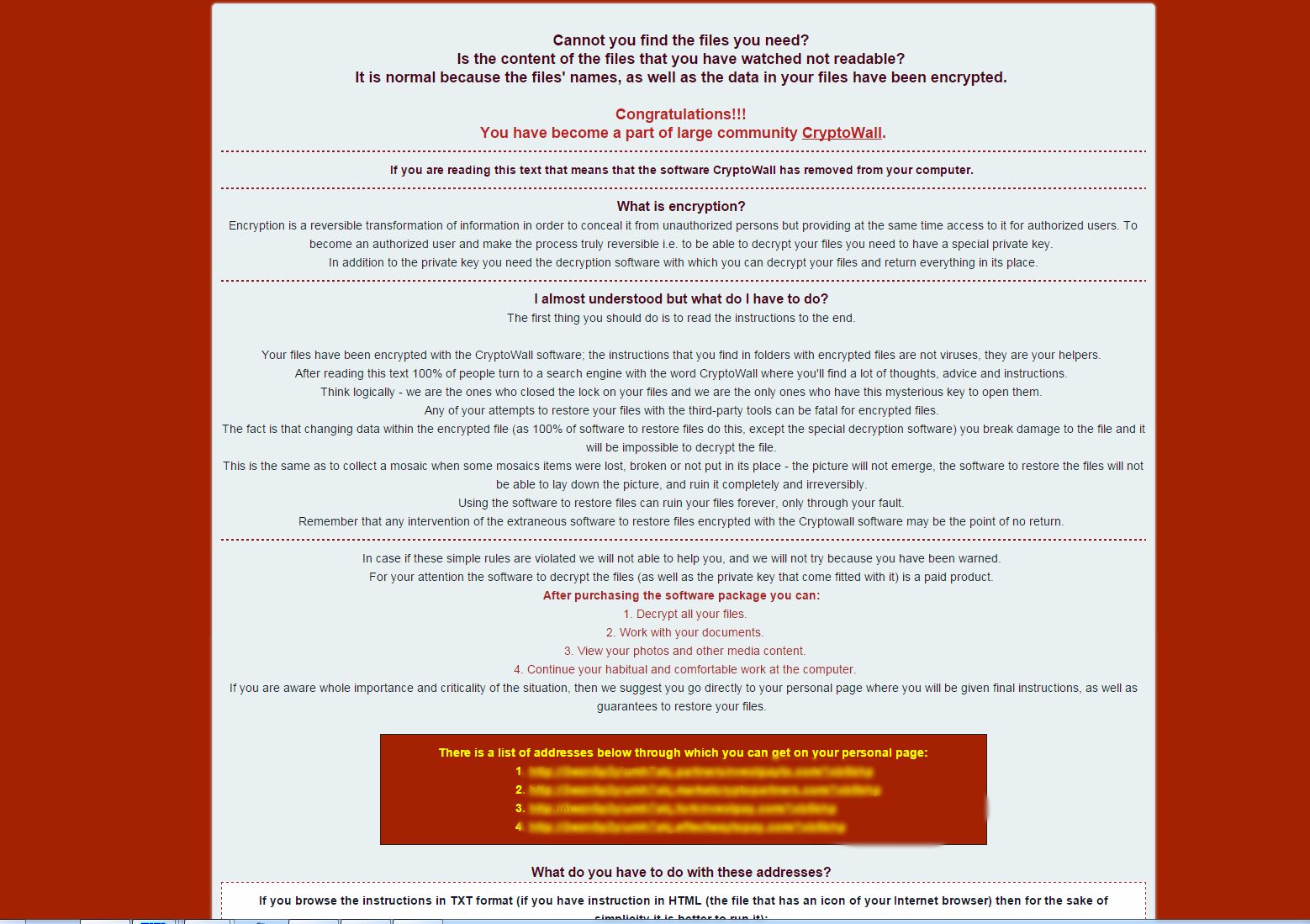
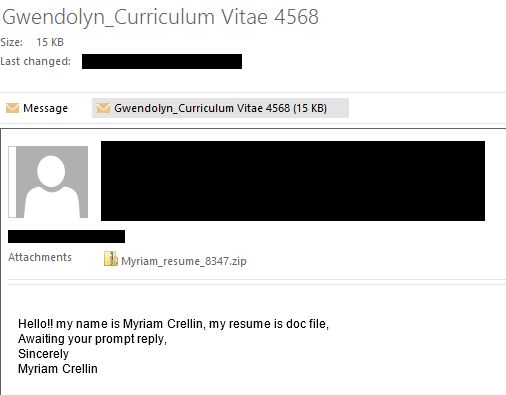
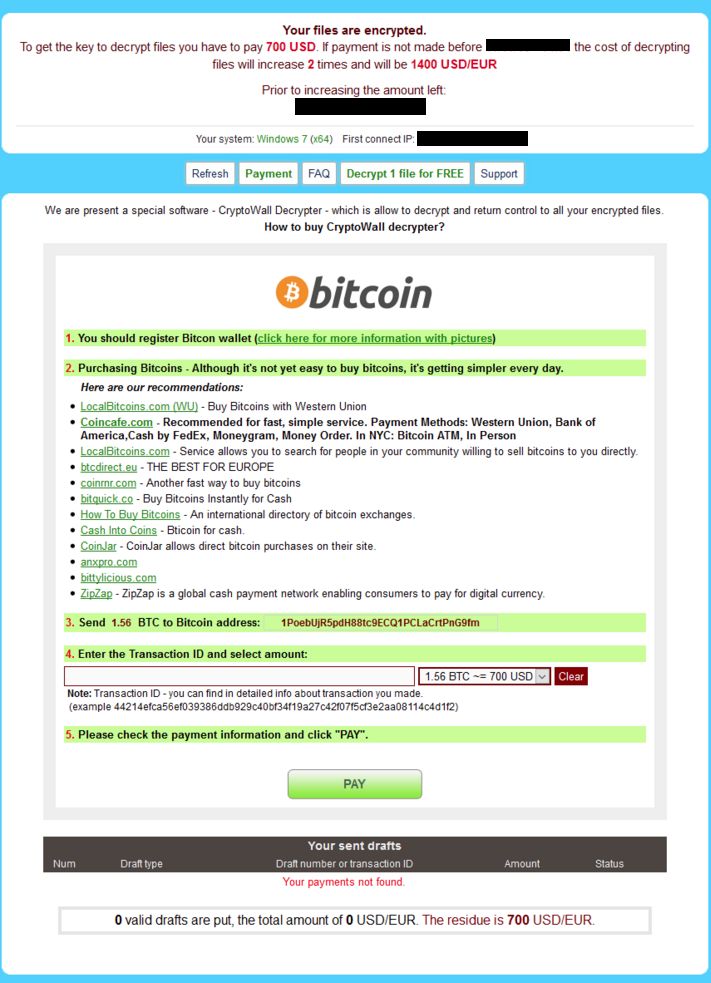
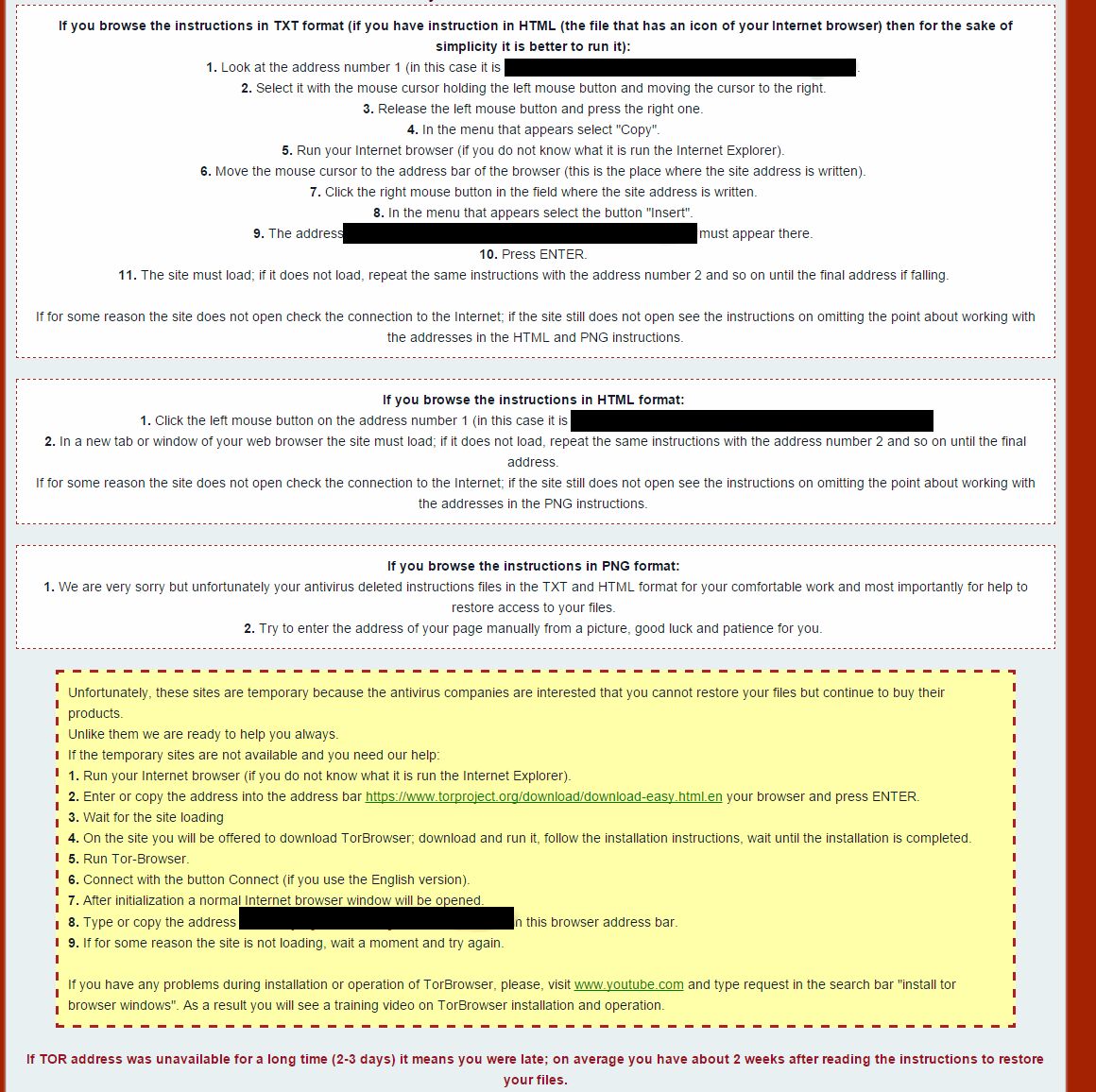
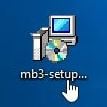
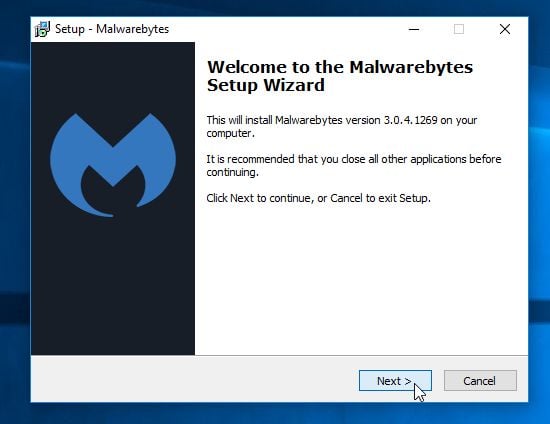
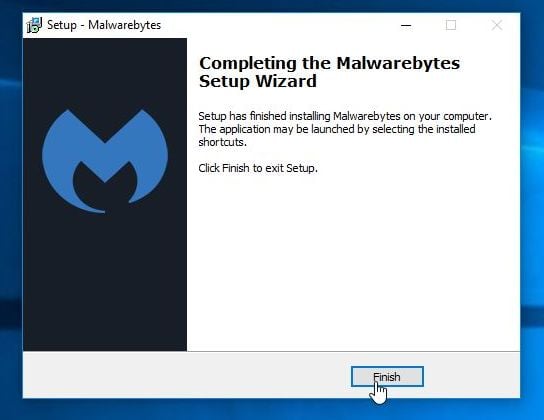
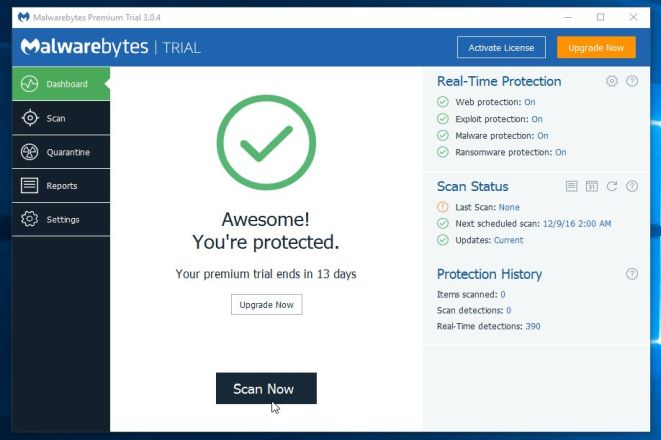
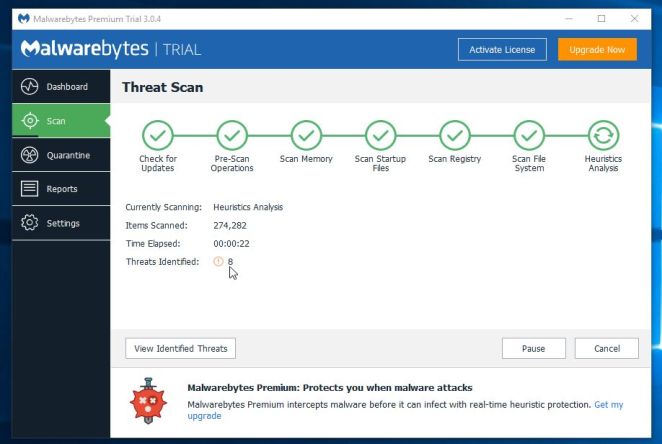

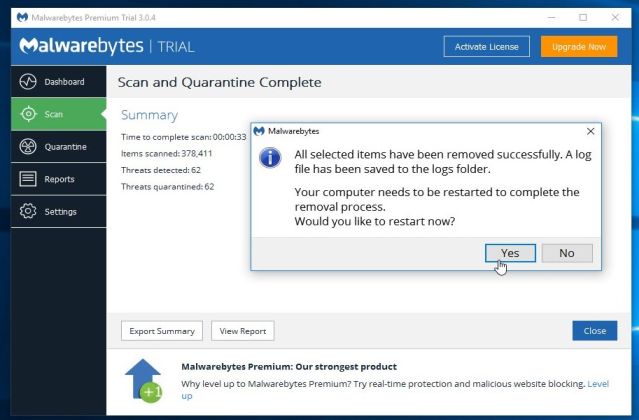
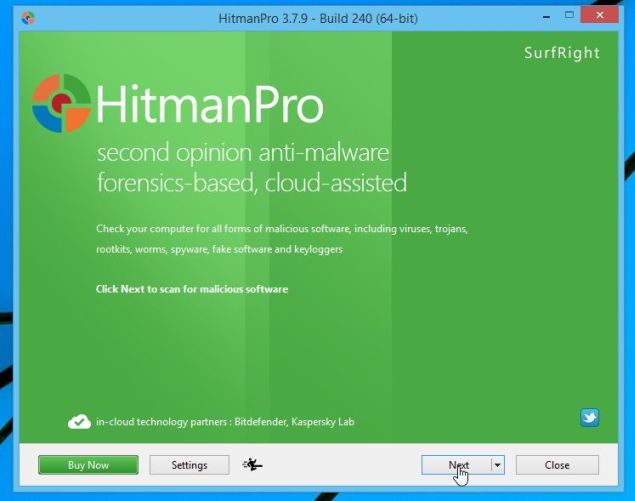
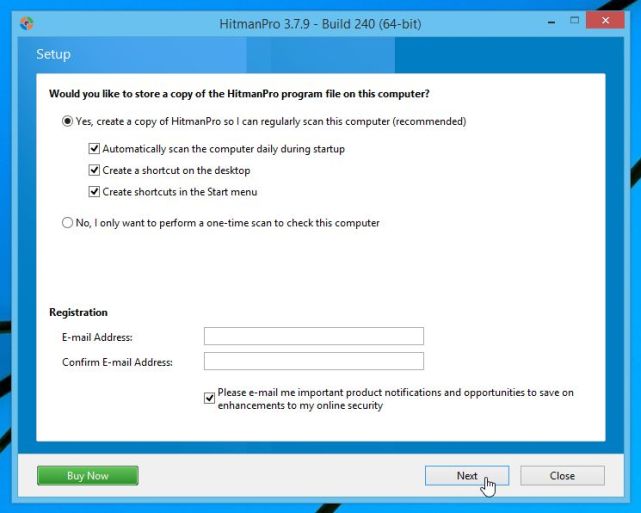
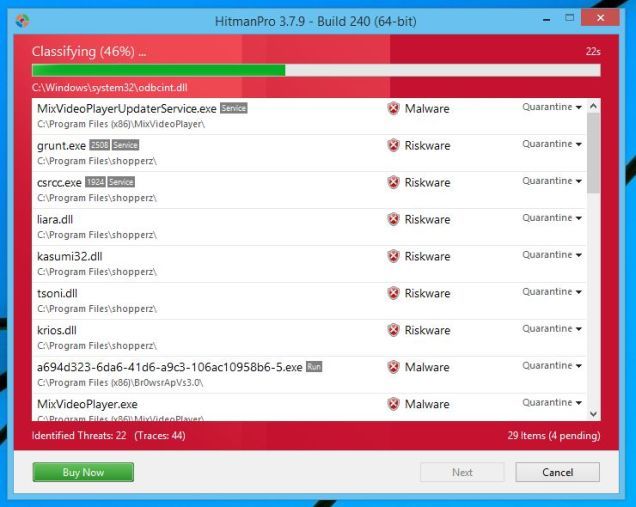
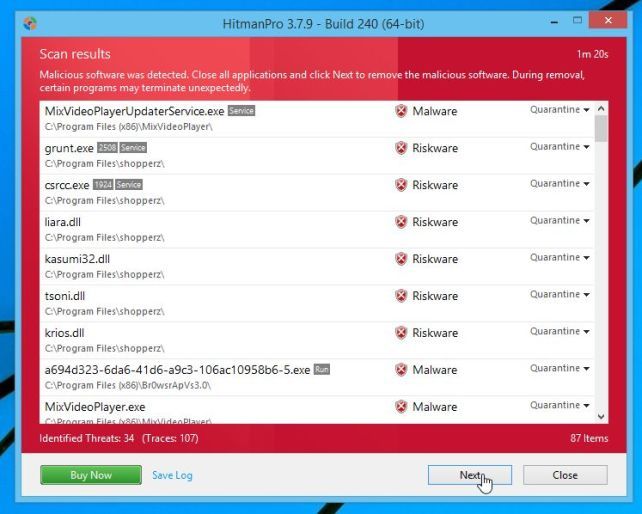
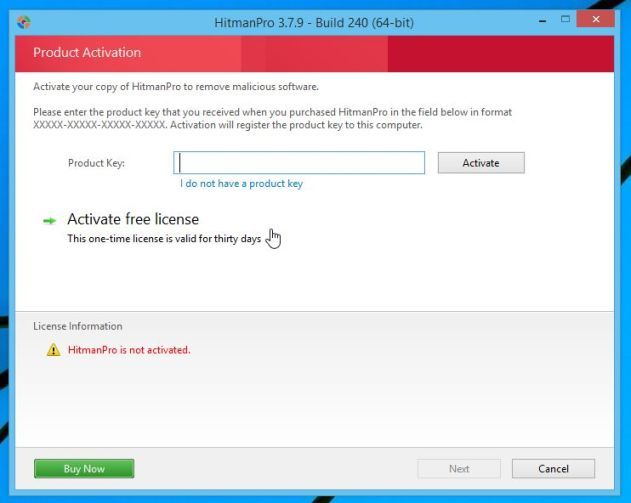










Thanks for informative post provided. The information provided here was quality and useful virus removal services in Hyderabad
Does this work to get files back? Can someone help me please!
I have managed to locate the private key used for the encryption, how do I use that as all my files are still encrypted. Is there a tool one can use together with the private key?